ALIVE AND BEYOND
From 24-15 June, Vivid Sydney lit up the Emerald City for the 14th time, with the ‘Vivid Light’ quarter of the programme featuring 40km lasers from Sydney Tower, spectacular lighting of the Opera House sails and installations across, and even under, the city. TDC – Technical Direction Company has long been a leading provider of projection mapping services to the festival.
We spoke to Drew Ferors, Technical Services Manager at TDC, about how the company approaches a festival of this magnitude. “In 2024, we ran 15 different installations with 90 projectors,” Drew explains. “We’ve improved our remote control and monitoring of the installations every year, creating our own software and adding features like 4K resolution and fiber optic transport. We build robust systems that don’t need to be maintained by technicians day in and day out. Systems that are durable, can operate in the rain, and have backup systems.”
A few years ago, TDC’s remote systems were simply remote on/off capabilities. Today, they’re more like NASA’s Mission Control Center. “Our ability to remotely control and monitor all of our projection installations makes our delivery more reliable,” Drew says. “It makes things easier for us and the client. We’ve equipped all of the installations with PTZ security cameras with optical zoom that can get a close-up look at certain parts of the buildings from a centralized location in the city. Rather than having technicians sitting in each individual projection tower, the bulk of our technical staff is in a much more comfortable workspace in the Event Control Center. They have a live video feed of every projection location we do at Vivid, all in one place. Our internet access at the facilities has improved a lot because Destination New South Wales installed wired internet at all of them. 4G is not practical because when the city is busy, it slows down considerably.”
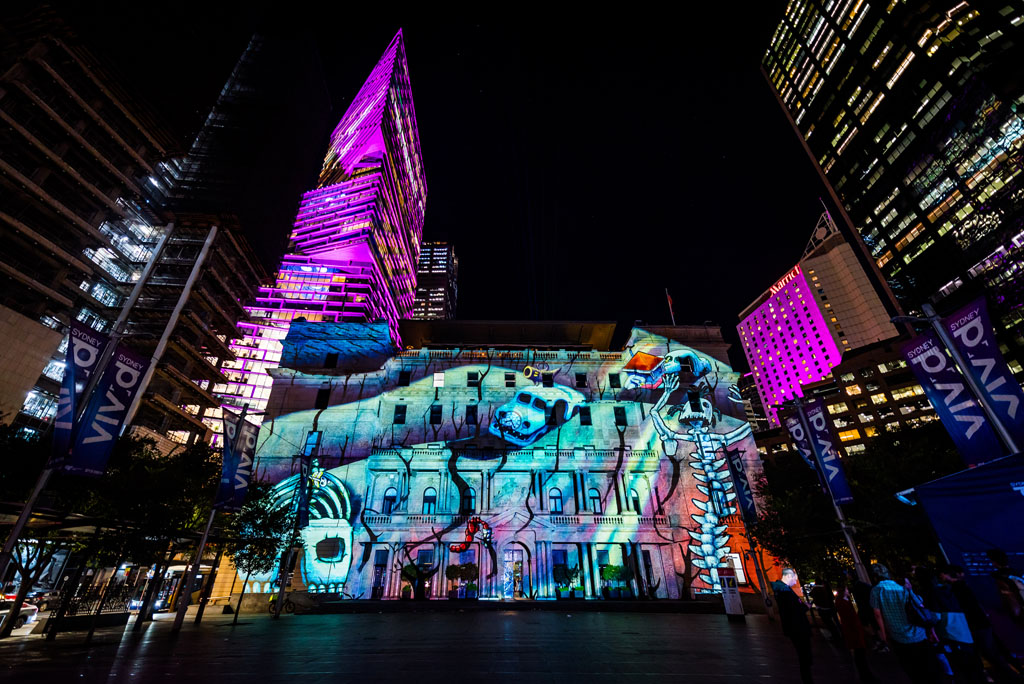
In previous years, each venue was staffed and it was difficult to adjust shows once they were set up. “Now, we do a programming adjustment at the beginning of every night, at every facility,” Drew continues. “We also record everything we do. When technicians zoom in on a certain part of a building, we capture it all and then we can check it to see if there’s an ongoing issue. If a certain projector is always drifting to the left, we can see it in the recordings and then go out there and fix it.”
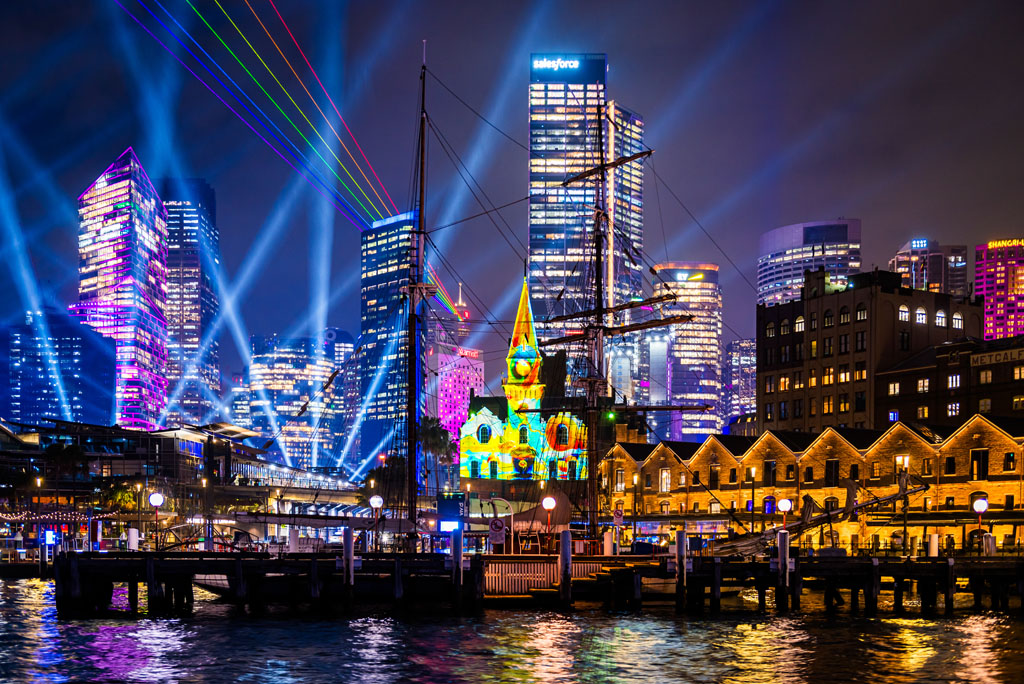
As thousands of people flock to the city each night for the shows, TDC technicians are already at the control center, running their pre-show checks. “Before the show starts, we can check all the systems in 20 minutes, logging into each venue individually to make sure all the systems are perfect before the projectors even come on,” Drew boasts. “We can anticipate problems before they affect the show. We can log in, change projector alignments, move the lens, or refocus the projector from the control center, or even from anywhere in the world. The alignments of these projection installations always require some maintenance, which we traditionally do once every three days at best.”
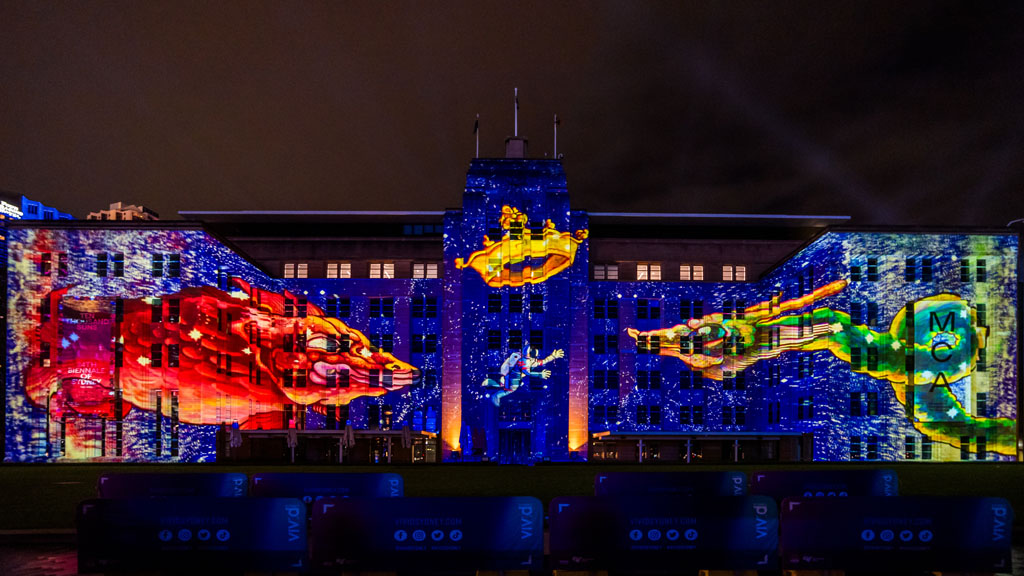
The monitoring software also has its own monitoring software. “As well as the venue software that monitors all the projectors, we have cloud-based software that monitors that monitor and makes sure it’s working properly too,” Drew confirms. “For example, it could be 11am on a Monday morning and I’ll get an email from the system saying we’ve lost power at Customs House. We can have staff come out to the venue, hours before the show. This allows us to resolve issues before they become a problem. It’s preventative rather than reactive and it really helps us sleep better at night. The uptime of the projection facilities is much higher than it used to be, and we have records of it all. We can share that confidence with the client and send them our central control view so they can see all the projectors that are working for them at any given time.”
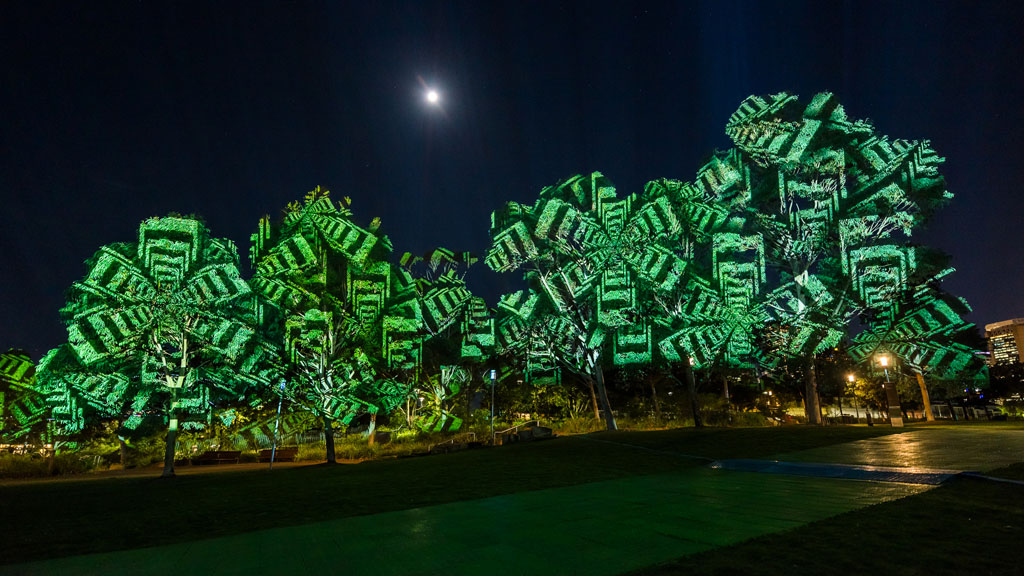
One of the interesting outcomes of the move to remote monitoring is that it is superior to on-site monitoring in many ways. “Optical zoom security cameras are good enough to allow us to align projections of the building remotely,” Drew confirms. “On-site, it’s quite difficult to fix your eye on the laptop in front of you and then focus on the building 40 metres away. When you’re on a screen, sitting in the comfort of a desk, not cold, not in a hurry and not wanting to get out of there quickly. When it comes to aligning the pixels of the projection, we can zoom right in, and we’ve found that we get better results using optical zoom security cameras than we do with the human eye.”
In terms of equipment, TDC relied exclusively on Barco projectors to power Vivid, using the flagship UDM series alongside the UDX series. For media servers, installations varied with several server models ranging from Disguise to Christie’s Pandora’s Box.
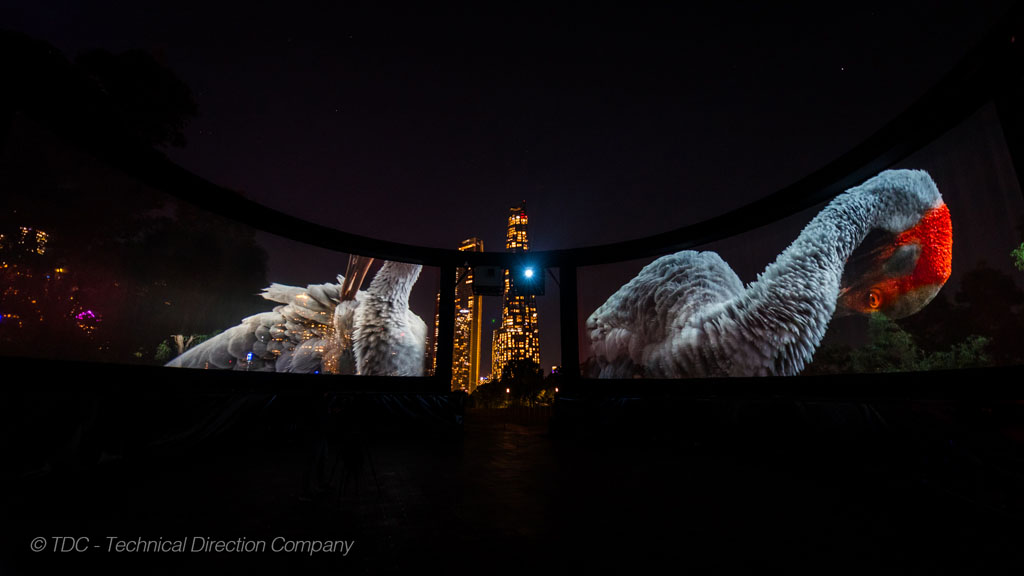
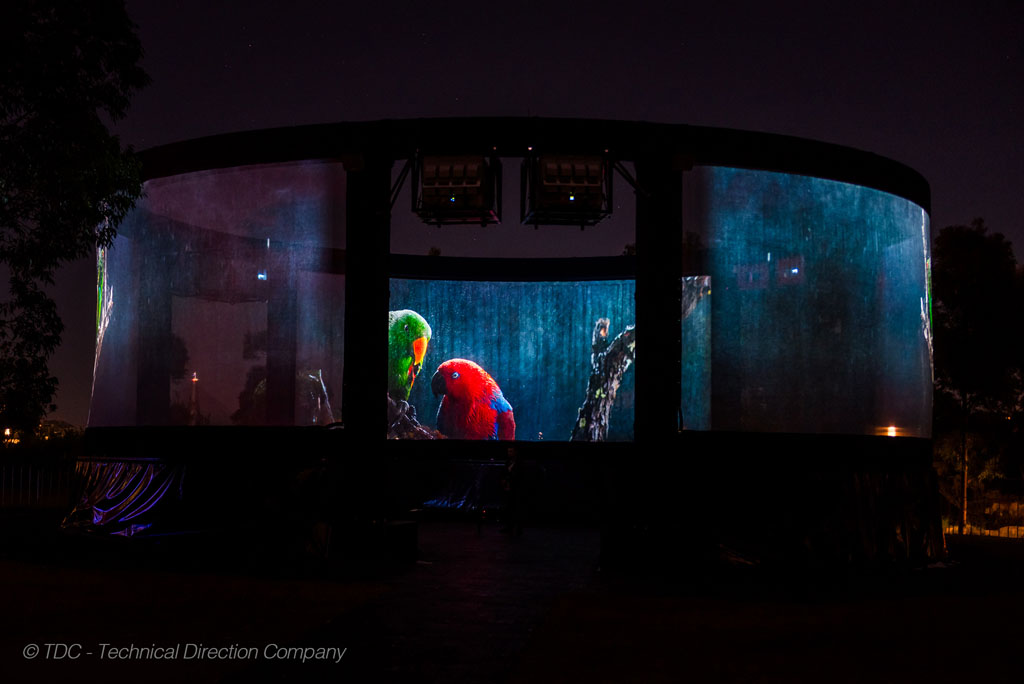
I asked Drew which Vivid projection he was most proud of: “My favourite was ‘Nest’ at Barangaroo,” he said. “We created a large circular structure from TDC’s gostMESH product, a nanotechnology fabric that absorbs colour and light while remaining transparent and invisible. We then projected beautiful images of slow-moving birds. It was visually stunning.”
Beyond Vivid
While the city-wide Vivid project is getting the most attention, TDC has worked on creating immersive experiences on a number of other projects. One of these is Dream Circus at Sydney’s Lunar Park Big Top, a 45-minute immersive multimedia show that runs multiple times a day. After seeing UK company Hive’s modular media management system at ISE this year, I was delighted to hear that TDC had deployed the first installation in Australia.
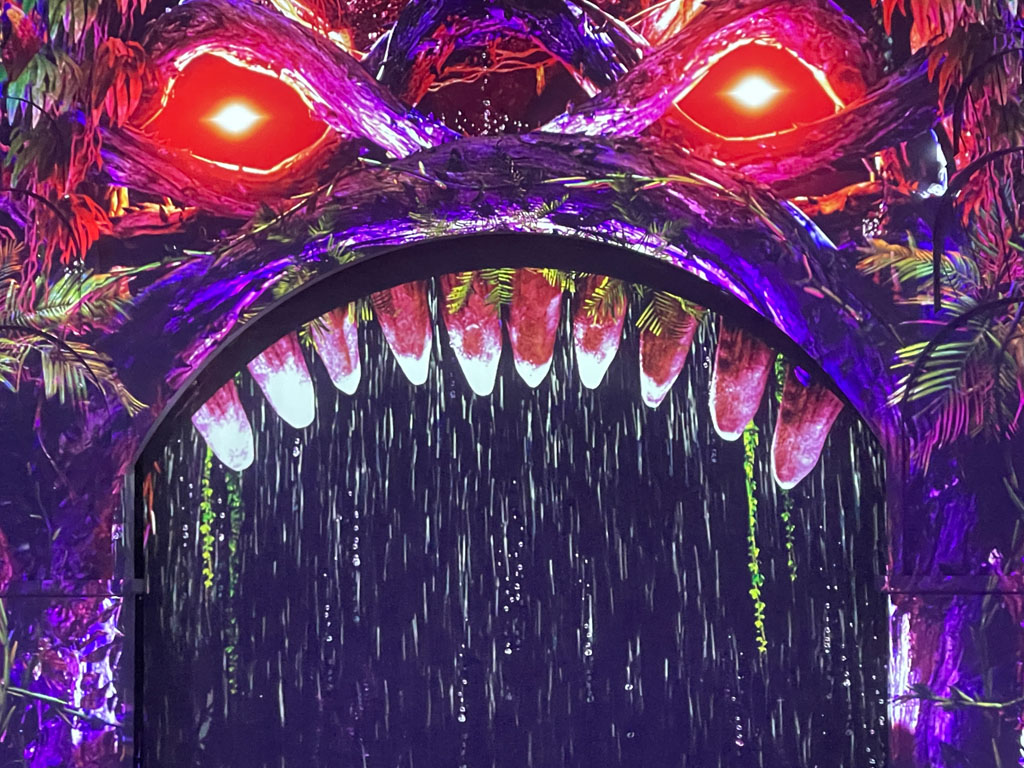
“After having a great experience with the flexibility of the servers, we decided they would be a perfect solution for Luna Park. Hive occupies a middle ground in the market. Really advanced media servers like disguise and Pandora’s Box are designed to be used by very experienced technicians. They are designed so that professionals can make quick and easy changes on the fly. Dream Circus is a permanent installation, so limited changes to the output are required, so this level of flexibility is not required.”
“The Hive media player is really good at playing shows like a museum would,” Drew continues. “You upload the content and play it back more or less indefinitely. Luna Park is a really robust system. Everything is synchronized and works perfectly in sync. We don’t have technicians at Luna Park all the time; it’s all managed by the client. They just press a big ‘play’ button when everyone in the audience is seated. Hive is designed to have a user-friendly interface for the end client. We also monitor this system remotely, with the same cameras and systems that we use on Vivid.”
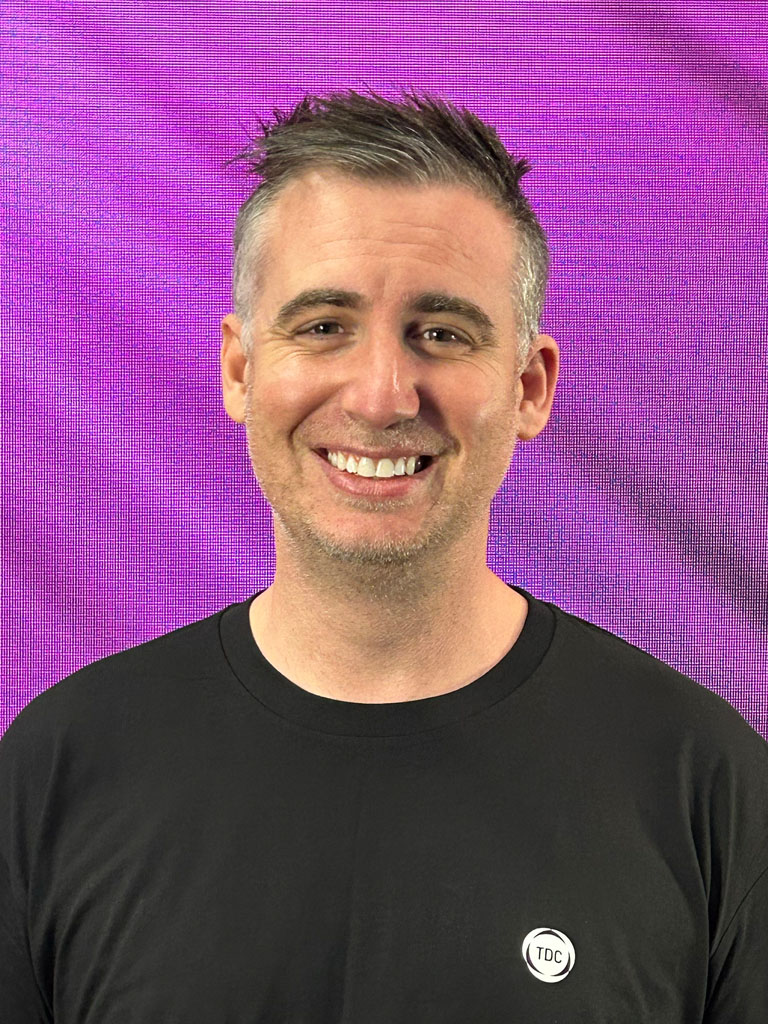
Dream Circus runs on 38 Barco G-Series projectors powered by 32 Hive Pluto Beeblade media engines, housed in Hive’s 5U Beehive chassis, sitting alongside 10 Hive Beebox media players.
The Hive infrastructure is housed in a central room on the ground floor, with fibre optic signal transport to the projectors. Each Hive media player is a standalone piece of hardware, so if it fails it won’t take the entire system down like a traditional media server would. You can simply remove the faulty unit and install a replacement.
